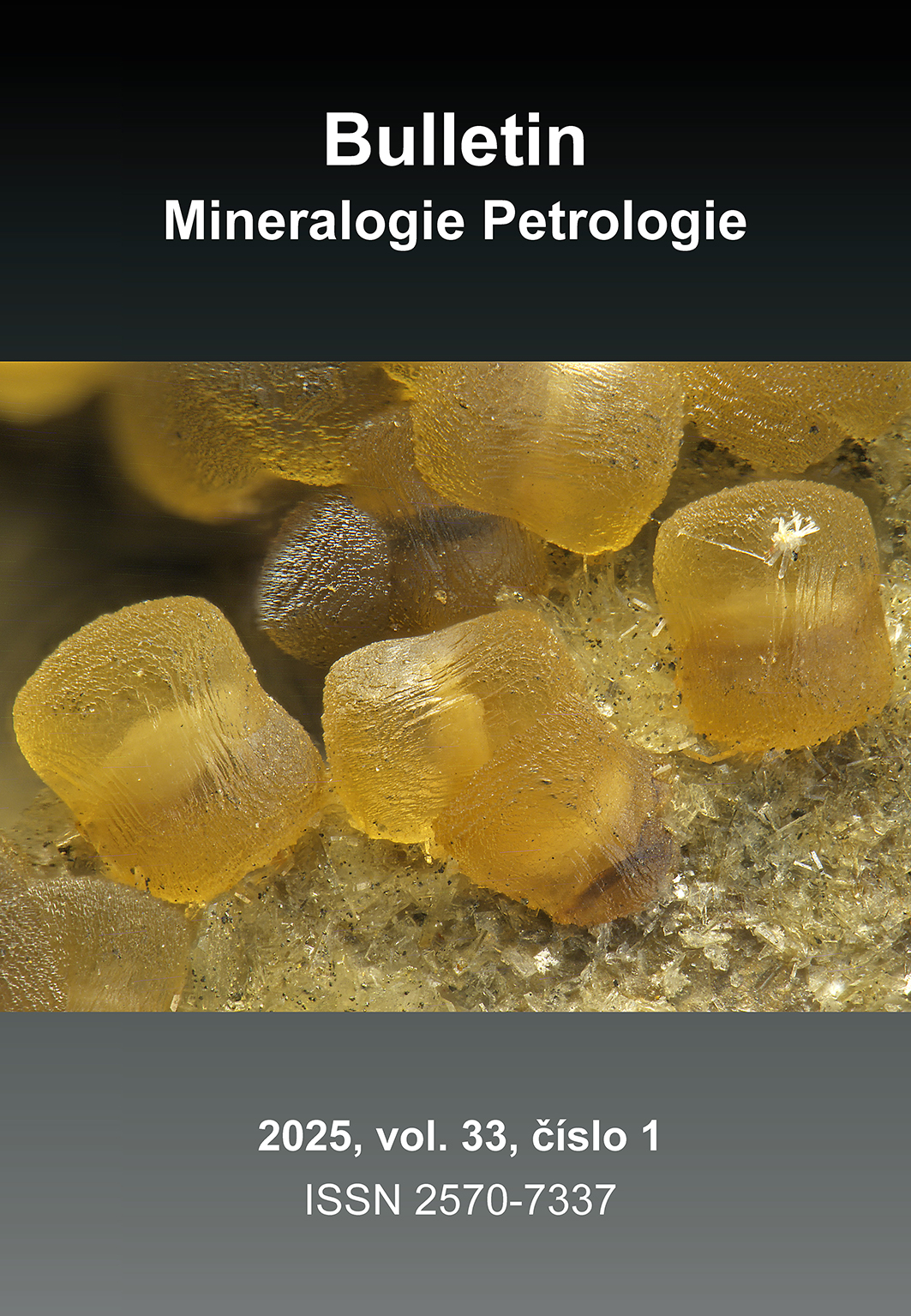Látkové složení pigmentů zlaté tiskařské barvy použité na podstavcích minerálů v historické mineralogické expozici Národního muzea v Praze
Composition of pigments of gold printing-ink used on pedestals of mineralogical specimens in historical mineralogical exposition of the National Museum in Prague
Klíčová slova
Abstrakt
Material composition of pigments of gold printing-ink used on pedestals of mineralogical specimens in historical mineralogical exposition of the National Museum in Prague has been determined by means of electron microprobe and microRaman analyses. Three types of pedestals originating from distinct periods of evolution of the mineralogical exposition were investigated. The oldest pedestals from the beginning of 20th century contain printing-ink based on finely powdered gold alloy composed of 90 wt. % Au, 7 wt. % Ag and 2 wt. % Cu. The printing-ink from pedestals from the 30´s of the 20th century contains high contents of iron (20 wt. % Fe2O3), aluminium (7 wt. % Al2O3), chlorine (14 wt. % Cl) and sulphur (2 wt. % SO3). The Raman spectrometry proved the presence of iron(III) hydroxide. We hypothesize that the pigment was probably based on Fe-Al hydroxides coloured by a sorbed yellow organic stain in this case. The youngest printing-ink used on pedestals from 80´s of the 20th century contains relatively coarsely powdered alloy with composition equal to tombac (85 wt. % Cu and 15 wt. % Zn). The results show that distinctly different pigment compositions as well as different printing techniques were used in various stages of evolution of mineralogical exposition.
Soubory
Reference
Adar F (2012) Interpreting Raman spectra of functionalized polymers: Applying the tricks of the trade. Spectroscopy 27, p. 14: 5pp
Araújo R, Nabais P, Cardoso IP, Casanova C, Lemos A, Melo MJ (2018) Silver paints in medieval manuscripts: a first molecular survey into their degradation. Herit Sci 6: 8
Beyer H (1958) Organická chemie. SNTL Praha
Costa V (2001) The deterioration of silver alloys and some aspects of their conservation. Stud Conservat 46, sup1: 18-34
Hanesch M (2009) Raman spectroscopy of iron oxides and (oxy)hydroxides at low laser power and possible applications in environmental magnetic studies. Geophys J Int 177: 941-948
Chike KE, Myrick ML, Lyon RE, Angel SM (1993) Raman and near-infrared studies of an epoxy resin. Appl Spectr 47: 1631-1635
Chvojka J (1971) Neželezné kovy a jejich slitiny. Nakladatelství technické literatury, Praha
Kaplanová M (2010) Moderní polygrafie. Svaz polygrafických podnikatelů, Praha
Kikkawa S, Kanamaru F, Koizumi M, Rich SM, Jacobson A (1983) Layered intercalation compounds. In: Holt SL Jr. (ed) Inorganic syntheses, Vol. 2: 86-89. Inorganic Syntheses Inc.
Rosický V (1939) Příručka pro určovací praktikum mineralogické. Melantrich Praha
Tanevska V, Nastova I, Minčeva-Šukarova B, Grupče O, Ozcatal M, Kavčić M, Jakovlevska-Spirovska Z (2014) Spectroscopic analysis of pigments and inks in manuscripts: II. Islamic illuminated manuscripts (16th–18th century). Vibrat Spectr 73, 127-137
Tuček K (1978) Kapitoly z dějin mineralogicko-petrografického oddělení Národního muzea v Praze. Čas Nár muz v Praze, řada přírodovědná 147, 1-4: 1-142
Vandenabeele P, Wehling B, Moens L, Edwards H, De Reu M, Van Hooydonk G (2000) Analysis with micro-Raman spectroscopy of natural organic binding media and varnishes used in art. Anal Chim Acta 407: 261-274
